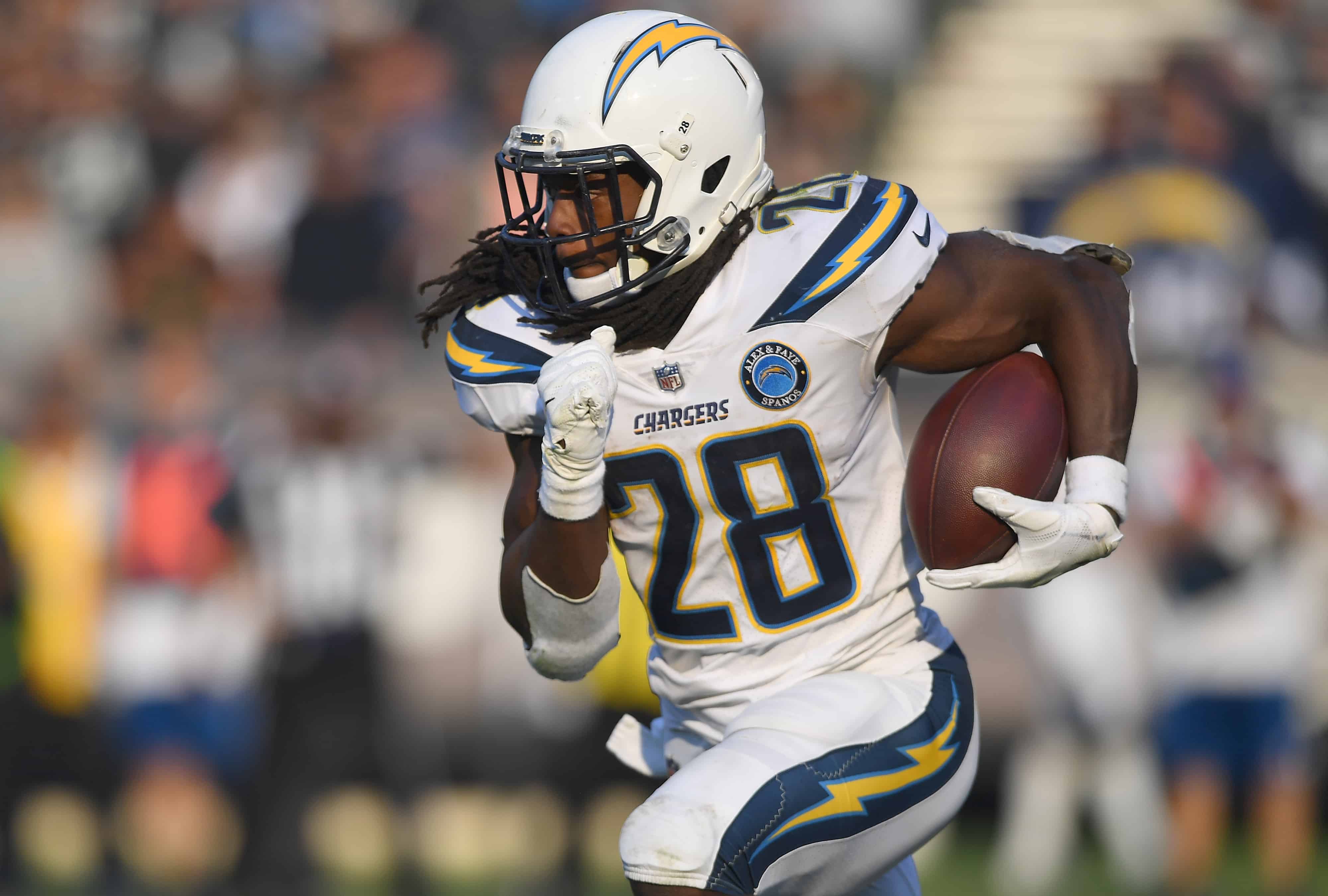With running back spots drying up, we have been waiting to see where Melvin Gordon lands. With only a few spots left open for a lead back to take over a backfield, he surprised some by heading to a place with a back that has had over 200 touches and 1,200 yards from scrimmage in each of his first two seasons in the league…
Sources tell me Melvin Gordon is close to finalizing a deal with the Denver Broncos.
— Stephen Watson (@WISN_Watson) March 20, 2020
Melvin Gordon Career Stats
| Year | Age | Gm | Att/Gm | RuY/G | RuTD | YPC | Tgt/Gm | Rec/Gm | ReY/G | ReTD | PPR/Gm | PPG Rk |
|---|---|---|---|---|---|---|---|---|---|---|---|---|
| 2015 | 22 | 14 | 13.1 | 45.8 | 0 | 3.48 | 2.6 | 2.4 | 13.7 | 0 | 7.7 | 58 |
| 2016 | 23 | 13 | 19.5 | 76.7 | 10 | 3.93 | 4.4 | 3.2 | 32.2 | 2 | 19.3 | 5 |
| 2017 | 24 | 16 | 17.8 | 69.1 | 8 | 3.89 | 5.2 | 3.6 | 29.8 | 4 | 18 | 6 |
| 2018 | 25 | 12 | 14.6 | 73.8 | 10 | 5.06 | 5.5 | 4.2 | 40.8 | 4 | 23 | 5 |
| 2019 | 26 | 12 | 13.5 | 51 | 8 | 3.78 | 4.6 | 3.5 | 24.7 | 1 | 15.1 | 15 |
Gordon has played a full 16 games in just one of his first five NFL seasons. Last year’s four-game absence was due to an ill-advised holdout that put him in this predicament this offseason. After returning from that holdout, Gordon was a solid fantasy RB2, but lost a chunk of volume and efficiency off his 2018 production. Gordon’s 75.7 yards from scrimmage per game were his fewest per game since his rookie season after posting 114.6, 98.8, and 108.9 total yards per game over the previous three seasons.
Looking at Gordon’s complete resume, his 2018 efficiency appears to be an outlier. He’s averaged fewer than 5.0 yards per touch in four of his five seasons with fewer than 4.0 yards per carry in four of those seasons. In terms of success rate rushing, he ranked second in the league in 2018, but has ranked 23rd (45%), 33rd (40%), and 15th (51%). His new backfield mate Phillip Lindsay has ranked 22nd in 2018 (49%) and 19th in 2019 (50%).
Gordon is no stranger to sharing a smattering of touches with another back while still holding onto solid volume. Even in sharing work with Austin Ekeler the past two seasons, he’s averaged 18.8 touches (12th) and 17.0 (16th) per game. Lindsay has been in the same boat, sharing work in each of his first two seasons, averaging 15.1 touches per game in 2018 (21st) and 16.2 touches per game (19th) a year ago.
Where Gordon has excelled is finding the end zone. His 47 touchdowns over the past four years ranks third at the position while his 48 rushing attempts from inside of the 5-yard line over that span are second among all backs. Lindsay has strong in converting his goal line opportunities (10-of-15 career carries inside of the 5-yard line have gone for scores), but as a 190-pound back, we should anticipate him conceding those opportunities to the 215-pound Gordon.
Gordon not only has an edge near the goal line, but he’s been by far the better receiver out of the backfield in the NFL. Even with Gordon dropping to 7.0 yards per catch and 5.4 yards per target last season, he’s averaged over three receptions per game in each of the past four seasons. After catching after 117 catches in college, Lindsay hasn’t found a significant role in the receiving game at the NFL level. He even had his role reduced there during his second season, catching 18 passes for a paltry 54 yards over the final 11 games of 2019.
All in all, we know there’s going to be a larger split here for Gordon than the one that he shared with Ekeler in Los Angeles, but he does have an edge in the passing game and scoring opportunities. Lindsay has two 1,200-yard seasons sharing work, but Gordon is going to command more touches than Royce Freeman has the past two seasons while Gordon has an edge on all of the money touches. This reduces Gordon to a lower-end RB2 and Lindsay to an RB3.
















